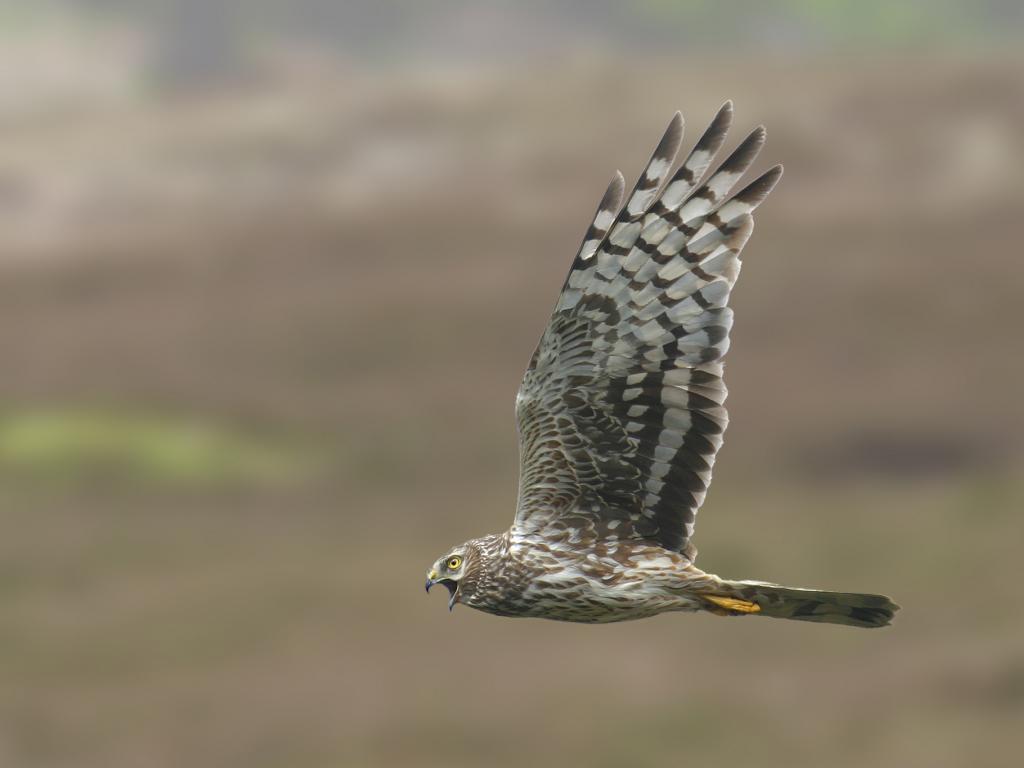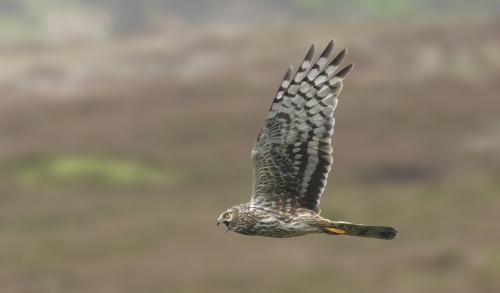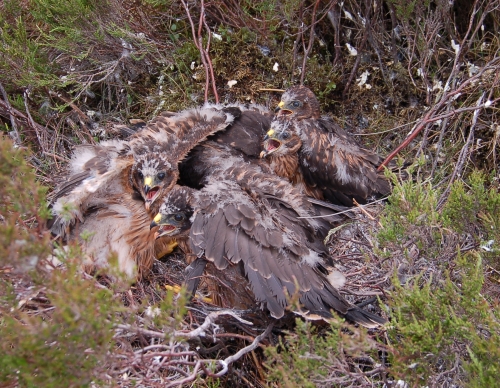UCT research identifies wildlife crime hot spots in the United Kingdom


The hen harrier flying over a British grouse moor Photo: Richard Saunders
University of Cape Town (UCT) academics have led an international study that has found that the young hen harriers (a bird of prey) in the United Kingdom (UK) suffer abnormally high mortality compared to other populations across their range.
The study finds that the most likely cause is illegal killings in areas of managed moorland used for the shooting of red grouse (grouse moors). Grouse shooting is the hunting of the red grouse, a popular sport in the UK.
The hen harrier, sometimes called the ‘skydancer’ because of its amazing acrobatic display in the breeding season, is one of England’s rarest birds and is legally protected. Illegal killing of hen harriers has long been thought to limit their population size but identifying the scale of these crimes and their impact on harrier populations has been difficult because they occur in remote areas; evidence is likely to be destroyed; and successful prosecutions are rare.
The study showed the likelihood of hen harriers dying, or disappearing, was ten times higher within areas predominantly covered by grouse moor, compared to areas with no grouse moor. The study revealed that 72% of tagged harriers were either confirmed or considered very likely to have been illegally killed.
This long-term study has enabled patterns of disappearances to be assessed across a large number of birds. It provides overwhelming evidence that illegal killing is occurring on some grouse moors, where some gamekeepers view hen harriers as a threat to their grouse stocks.

A brood of hen harrier nestlings, including two which have been equipped with satellite transmitters for this study. Photo: Peter Davies
Published today in Nature Communications, this paper represents the culmination of a 10-year study involving 58 satellite tagged hen harriers. The analyses have been led by UCT and Aberdeen University with the provision of tracking data from the English conservation agency, Natural England, and land use data from the conservation NGO, the Royal Society for the Protection of Birds.
Dr Megan Murgatroyd, from UCT’s FitzPatrick Institute of African Ornithology and lead author of the study commented: “Whilst dead harriers can be disposed of, the pattern of hen harrier disappearances revealed by these data could not be hidden. The multiple levels of analyses of the data have all led to the same robust conclusion that hen harriers in Britain suffer elevated levels of mortality on grouse moors, and this is most likely the result of illegal killing.”
Associate Professor Arjun Amar, also from the FitzPatrick Institute, who supervised the research, added: “High levels of illegal killing have long been suspected on English grouse moors, with this study we have been able to show just how widespread the issue is, and that even within protected areas illegal killing seems to be a major problem for this species.
“When people think about wildlife crime they often think about elephant and rhino poaching in Africa. However, wildlife crime is a global issue and even in developed countries like the United Kingdom, these activities can cause conservation problems for wildlife. We hope that our research can help find a way forward to address this major conservation conflict.”
